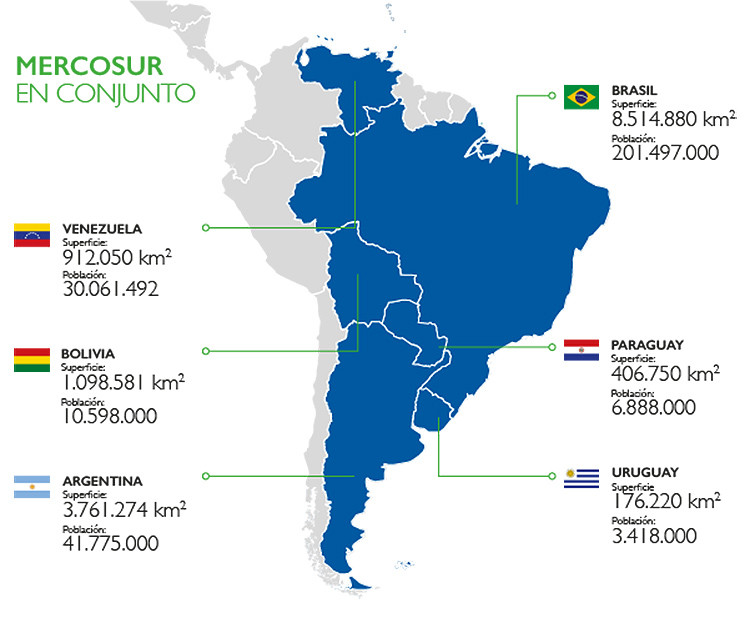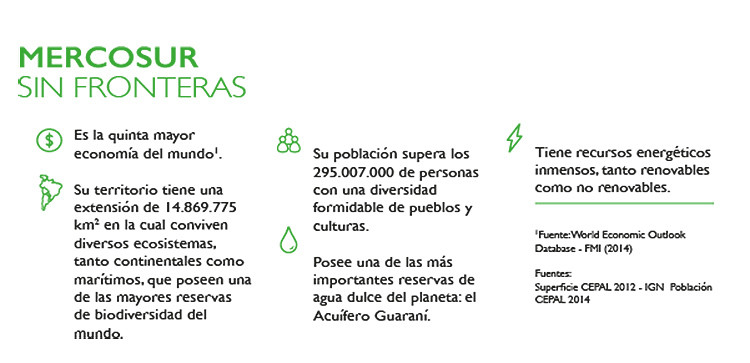The countries members of MERCOSUR represent 70% of the South-American territory (UNED Documentos, 2005), just as its surface is about 15 million km2. Currently, counting Venezuela as a member, the total population of the organization is about 295.000.000 inhabitants of which 10.533.000 are young people aged between 15-17 years old. (MERCOSUR, 2014) However, if it counts Bolivia as a member in the process, the total population would be of 304,754,969 inhabitants. (Country Economy, n.d.)
Regarding the landscape and natural features, the maritime borders of MERCOSUR are the North-Atlantic Ocean with Brazil, the Caribbean Sea with Venezuela, and the South-Atlantic Ocean with part of Brazil, Uruguay, and Argentina.

(RT, 2015)
The followed image shows the member states with their current population and current land place.

(RT, 2015)
Moreover, the followed image shows in Spanish the natural resources of some countries members have, just as the co-existent resources or ethnic groups in MERCOSUR territory:

(MERCOSUR, n.d.)
References:
Country Economy (n.d.) MERCOSUR - Southern Common Market. Retrieved from https://countryeconomy.com/countries/groups/mercosur
La Guía Geografía (2008). Mercosur. Retrieved from https://geografia.laguia2000.com/geografia-regional/america/mercosur
MERCOSUR (n.d) Países del MERCOSUR. Retrieved from
https://www.mercosur.int/quienes-somos/paises-del-mercosur/
RT (2015). Mercado Común del Sur (MERCOSUR). Retrieved from https://actualidad.rt.com/actualidad/180286-mercado-comun-sur-mercosur
UNED Documentos (2005, March 04) Mercosur: Pasado, presente y futuro [Video filed]. Retrieved from https://canal.uned.es/video/5a6f8d76b1111fa57b8b4579
Comments
Post a Comment